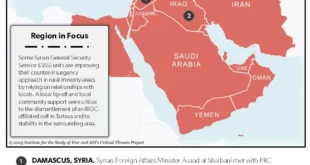Russia’s invasion of Ukraine has thrown into sharp focus the debate over how many U.S. troops should be permanently stationed in Europe and where.
Prior to the war, about 80,000 troops were on the continent, either on U.S. bases in countries like Germany, Italy, Spain and the United Kingdom, or as part of heel-to-toe rotations from the U.S., spread out to train with partners up and down the eastern edge of NATO.
Now, top brass are suggesting that plan needs some re-thinking.
“My advice would be to create permanent bases, but don’t permanently station,” Army Gen. Mark Milley, chairman of the Joint Chiefs of Staff, told the House Armed Services Committee on Tuesday. “So you get the effect of permanence by rotational forces cycling through permanent bases.”
The major difference would be that those troops would be on a type of deployment, and so wouldn’t bring their families with them, the way they do when spending two or three years at a time in Europe. So these bases would have basic services for troops, but wouldn’t require family housing, schools, shopping and other amenities available on traditional permanent installations.
“And I believe that a lot of our European allies … they are very, very willing to establish permanent bases,” Milley said. “They’ll build them, they’ll pay for them, etc.”
The services, particularly the Army, have been experimenting with the right force posture in Europe for much of the past decade.
After closing some permanent bases in Germany, the Army replaced many of those forces with back-to-back rotations of armored brigades. This model not only made it easy to plug rotations into planned exercises around Europe, but took some pressure off permanently based troops, who were constantly leaving countries like Germany to head to Romania or Poland, cutting into their home station responsibilities.
“You can bet that senior leadership at the department are going to take a look at our European posture going forward,” Pentagon spokesman John Kirby told Military Times on Wednesday. “Again, I can’t tell you when a decision is going to be made one way or the other.”
The Trump administration made a big push for sending more troops to Poland and drawing down significantly in Germany, though that plan never came to fruition.
Kirby confirmed that changes were discussed as part of a force posture review completed last year. The results of that, so far, have been mostly classified.
“NATO is going through a process right now to really, kind of, assess how we expect the security architecture in the future is going to change,” Defense Secretary Lloyd Austin told HASC on Tuesday.
Austin expects more discussions will take place at the next NATO leadership summit in June, he added.
 Eurasia Press & News
Eurasia Press & News



